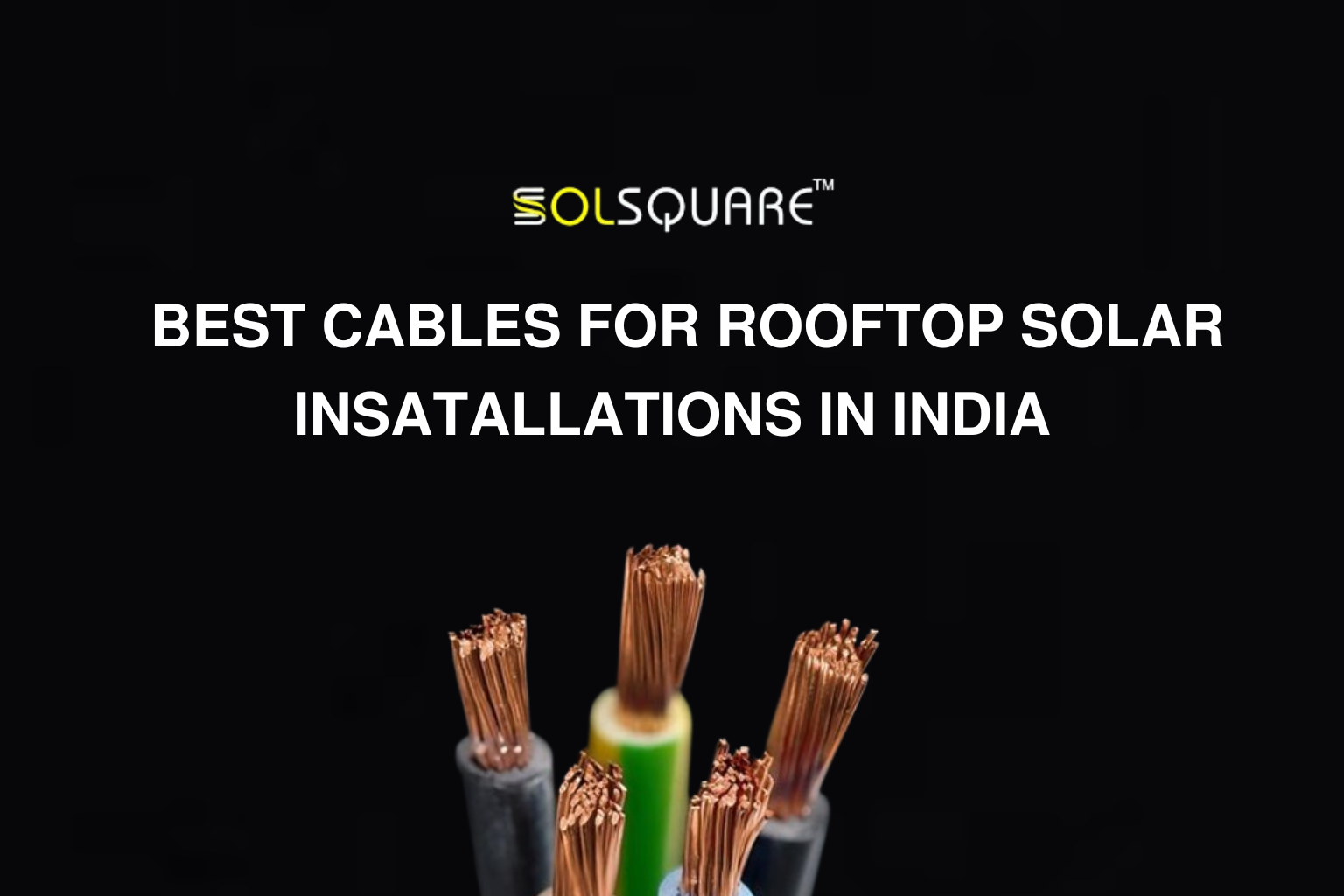Best Cables for Rooftop Solar Installations in India
India Rooftop solar has exploded in the last 10 years, fuelled by demand in clean energy, crashing electricity prices, and government grants. Although panel and inverters occupy the majority of the space, cables (that are critical to safety, performance, and service life) are neglected.

A solar system on the roof operates in high temperatures, changing weather condition, and steady power flux. Under challenging settings, cable quality will be equivalent to the panels themselves. Solsquare is one of the credible brands when it comes to supply of cables that are specifically used in solar applications within India.
Why Cable Quality Matters in Rooftop Solar
Cables are responsible for transmitting the electricity generated by solar panels to the inverter and from the inverter to the load. If the cables are not designed to handle the specific requirements of a solar setup, it can lead to:
- Energy losses due to high resistance
- Overheating and fire hazards
- Reduced system efficiency
- Frequent maintenance and replacement costs
The solar cables in high quality are long lasting and are resistant to extreme heat, UV radiation, rain and dust as well as mechanical loads which are the environments experienced by rooftop solar installations everyday.
An Ideal Solar Cable Properties
- UV Resistance – Essential for long-term exposure to sunlight.
- Flame Retardancy – Minimises fire hazards in case of short circuits.
- Weather Resistance – Can handle monsoons, extreme summer heat, and dust storms.
- High Current Carrying Capacity – Ensures efficient power transfer with minimal loss.
- Flexible Tinned Copper Conductors – For better conductivity and corrosion resistance.
- Long Lifespan – At least 25–30 years to match the solar panel’s life expectancy.
Solsquare Solar Cable Highlights
Solsquare solar cables are cables of photovoltaic power supply systems and affiliations. These are compliant with worldwide standards such as EN 50618 and IEC 60228 and are therefore reliable and safe in residential and commercial rooftop applications.
Key Specifications:
- Rating voltage: up to 1.5 kV DC
- Temperature range: -40° to +120° C
- Outer sheath: Cross-linked, halogen free & flame retardant
- Conductor: Flexible electrolytic tinned copper strands
- Insulation: Flame retardant, halogen-free & cross-linked
- Life Expectancy: 30 years
- UV & weather resistant
Applications:
- Interconnecting solar panels (module strings)
- DC connections between panels and inverters
- Suitable for fixed, mobile, or architecturally integrated PV installations
Types of Cables Used in Rooftop Solar Installations
1. Solar DC Cables
These are the primary cables connecting your solar panels to the inverter on the DC side. Solsquare’s solar DC cables are single-core, flexible, and designed for high-voltage operation, making them ideal for rooftop environments.
2. Single-Core and Multi-Core Cables
Single-core cables: Commonly used for DC connections between panels and inverters.
Multi-core cables: Used on the AC side or for control wiring.
Solsquare Benefits:
- Heat-resistant insulation
- High current carrying capacity
- Resistance to moisture, abrasion, oil, and grease
3. House Wires (FR, FRLS, ZHFR)
For AC distribution from the inverter to household circuits, Solsquare offers flame retardant (FR), flame retardant low smoke (FRLS), and zero halogen flame retardant (ZHFR) wires for maximum safety.
4. Armoured Power Cables
To resist physical damage (e.g. during construction), armoured cables can typically be used with larger rooftop systems and in commercial or industrial use.
The Right Way to Select the Solar Cable
- Check compliance with EN 50618, IEC 60228 standards
- Use tinned copper for corrosion resistance
- Match voltage rating – up to 1500V DC
- Consider high heat tolerance for Indian summers
- Choose cross-linked, halogen-free sheath materials
- Calculate cable size based on current, distance, and voltage drop
Best Practices in Rooftop Solar Installation of Cables
- Maintain recommended bending radius
- Use UV-resistant conduits or trays
- Separate AC and DC cable runs
- Secure cables with UV-resistant clamps
- Conduct regular wear-and-tear inspections
FAQs
Conclusion
Panels and inverters will only be complete in rooftop solar systems with cables. Use of poor quality cables may lead to loss of energy, loss of efficiency, and safety issues.
The Solsquare solar cables are constructed to endure the discordant climate in India, the punishing summer sun and the intense down pouring rains of the monsoon — all while keeping safety in mind. With the right cables today, you can ensure years of low-cost solar energy production.